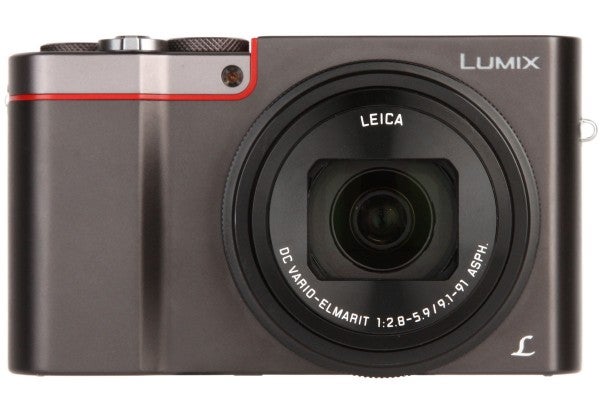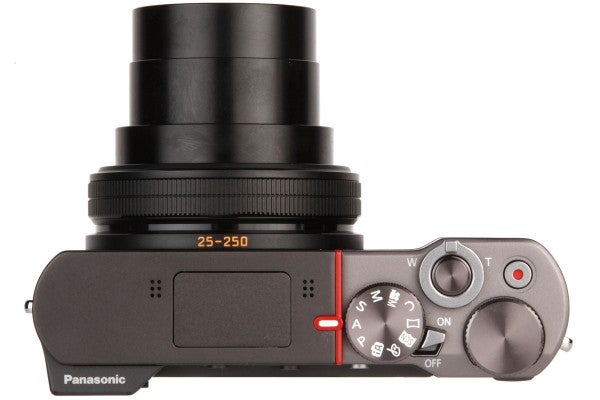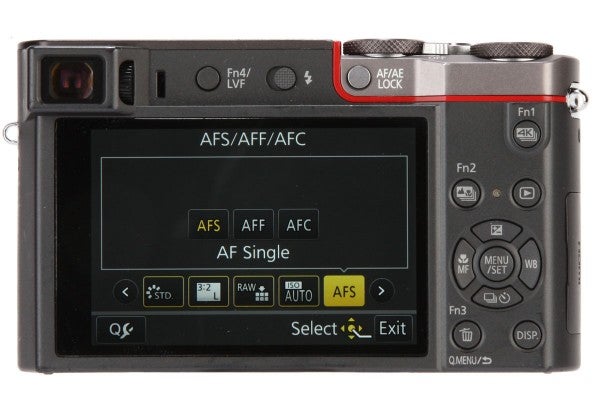Andy Westlake tests Panasonic's pocket travel camera with a 1in sensor and 10x zoom lens
Panasonic Lumix DMC-TZ100 review
Build and handling
With a metal body shell, the TZ100 feels sturdy and well made, as befits a £560 camera. The top-plate dials click with a pleasing precision and the lens control ring rotates with silky smoothness. Combined with the modern-looking design and smooth surface finish it really feels like a premium product.
The camera comes in two colour schemes, either conventional all black or the distinctively styled ‘red’ version we used for this review. This has a mostly gunmetal body with a contrasting titanium finish to the right top-plate, separated by a sliver of red. I wasn’t convinced by this at first sight, but quickly grew to like it. If anything, I’d love to see Panasonic offering more colours for that extra element of personalisation.
When you come to start shooting with it, though, the TZ100 quickly shows some limitations. The handgrip is very small, and there’s only a small, ill-defined space to put your thumb. Many camera manufacturers have taken to designing sculpted, ergonomic thumb grips as they can work wonders on small cameras, and it’s a shame Panasonic hasn’t followed suit here.
Combined with the slippery smooth metal finish, it means that the camera doesn’t feel very secure when held one handed. I’d recommend using a wrist strap at the very least, and ideally a better one than Panasonic supplies in the box.
For a camera that’s aimed at enthusiast photographers, the control layout leaves a little to be desired. The front control dial feels rather under-used: when it’s not being used for manual focus it simply replicates the function of the top dial in changing shutter speed or aperture. However, it can’t be used to change other settings, such as ISO, when they’re activated by pressing a button; instead you have to use the d-pad or top dial, which ends up needing a lot of thumb movement.
Oddly, that top dial works in the opposite direction to normal when changing exposure settings: to select a smaller aperture or faster shutter speed, you have to rotate it clockwise by moving your thumb leftwards.
Pressing the ‘up’ arrow on the d-pad accesses exposure compensation. This is fairly standard for a compact camera, but still annoying for anyone who’s become used to a dedicated dial.
Strangely, ISO isn’t assigned a button by default, but I set it onto the 4K Post-Focus button (Fn2). The focus area can be set using the touchscreen, but I found I frequently set it accidentally with either my thumb brushing the top right corner of the screen or (being a left-eyed shooter) my nose. If you can’t get on with using the touchscreen, then you can assign one of the physical Fn buttons to access focus area selection instead.
Most secondary settings can be accessed either from the d-pad or the onscreen Q Menu. With Panasonic’s well-considered touch interface, this allows you to access and change a lot of options very quickly.
The touchscreen is also handy for browsing images during payback. However, if you don’t want to use it, you can turn it off completely and just use the buttons and dials instead, although this may slow some things right down.
All in all, I found the TZ100 perfectly useable, although not as nice to shoot with as the best enthusiast compacts around, particularly when using the viewfinder. However, you won’t find a travel-zoom type camera that handles much better.
Viewfinder and screen
The TZ100 offers two viewing choices while shooting, either the built-in 1.14-million-dot electronic viewfinder or the 3in 1.04-million-dot LCD.
At just 0.42x magnification, the EVF is really very small and it’s rather high in contrast, too, giving a distinctly different rendition of the scene compared to the LCD. Even so, it’s very useful when shooting in bright light, and a lot better than not having an EVF at all. But I’d have much preferred to see a larger viewfinder, even at the expense of camera size.
The rear screen is very good, giving a more accurate preview of the final image than the EVF, but its fixed design now feels like an anachronism. Clearly Panasonic is aiming to keep the camera’s size to a minimum, but I missed the additional compositional flexibility offered by a tilting or articulated screen.








